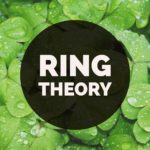The Ideal Generated by a Non-Unit Irreducible Element in a PID is Maximal

Problem 177
Let $R$ be a principal ideal domain (PID). Let $a\in R$ be a non-unit irreducible element.
Then show that the ideal $(a)$ generated by the element $a$ is a maximal ideal.
 Add to solve later
Add to solve later
Sponsored Links
Proof.
Suppose that we have an ideal $I$ of $R$ such that
\[(a) \subset I \subset R.\]
Since $R$ is a PID, there exists $b \in R$ such that $I=(b)$. As $a \in (a)\subset I=(b)$, we can write
\[a=bc\]
for some $c \in R$.
The irreducibility of the element $a$ yields that either $b$ or $c$ is a unit element of $R$.
If $b$ is a unit, then $I=(b)=R$. If $c$ is a unit then we have $c’\in R$ such that $cc’=1$.
Then $b=b\cdot 1=bcc’=ac’$, and we have $I=(b)=(a)$.
Therefore, in either case, we see that we have $I=(a)$ or $I=R$.
Thus, $(a)$ is a maximal ideal.
 Add to solve later
Add to solve later
Sponsored Links










